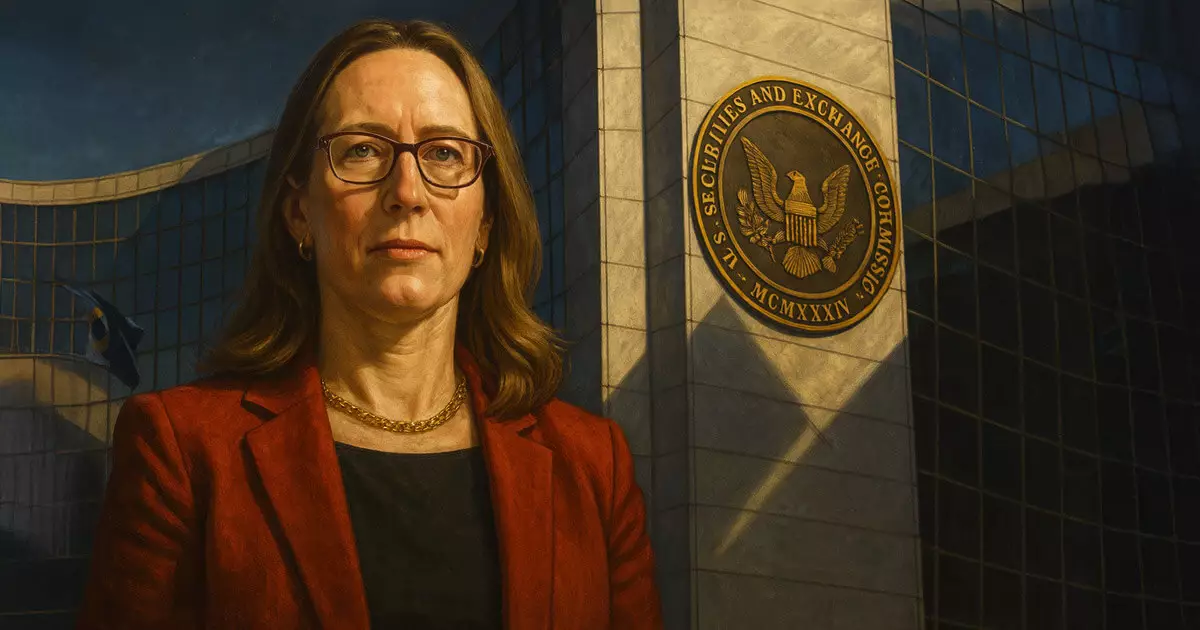In a move that signals a recalibration of regulatory outreach, the U.S. Securities and Exchange Commission (SEC) is taking its crypto policy dialogue on the road, embarking on a nationwide tour that begins in Berkeley and stretches through several major cities before the year’s end. While at first glance this initiative might appear to foster transparency and democratize policymaking, a deeper analysis suggests it could serve as a strategic PR gambit, aimed more at controlling the narrative than genuinely fostering clarity. The SEC’s decision to engage directly with small, innovative teams in their local environments rather than solely within Washington’s bureaucratic walls offers a dual perspective: an effort to appear inclusive and a calculated move to gather grassroots insights that might influence future regulations.
However, the underlying question remains—will these sessions lead to meaningful regulatory reform or merely serve as window dressing? The SEC’s past approach has often been characterized by opacity and a tendency towards aggressive enforcement rather than thoughtful dialogue. While the inclusion of startups and small teams hints at a recognition of the sector’s vibrancy, it likewise raises concerns about whether meaningful change is on the horizon, or if this is simply an exercise in perception management. The real proof lies in whether these local stakeholders will have sufficient voice and whether the insights gathered will be genuinely incorporated into future policymaking.
Regulatory Clarity or a Pandora’s Box of Uncertainty?
One of the most persistent issues facing the cryptocurrency industry is regulatory ambiguity. Advocates for innovation lament that the current legal landscape is outdated, often forcing new projects to navigate a minefield of unclear rules that threaten their survival. Skeptics, however, see this ambiguity as a deliberate tool to control and limit the rapid growth of decentralized systems that challenge traditional financial authority. The SEC’s outreach seems to walk a tightrope, ostensibly seeking feedback while potentially setting the stage for more restrictive policies that favor established incumbents over emerging players.
This roadshow appears more reactive than proactive, responding to industry concerns with an intent to shape perceptions rather than deliver substantive legal clarity. While local sessions might generate anecdotal insights, the broader challenge is whether these conversations will translate into pragmatic reforms that foster innovation without compromising investor protection. Historically, regulatory bodies have favored incremental steps that tighten control, and skepticism remains whether the SEC’s efforts will ultimately tilt the balance toward stricter oversight rather than clearer, more predictable rules.
The Future of Crypto Regulation Is Still a Moving Target
Despite the SEC’s assertion that it aims for a comprehensive engagement, the truth is that the regulatory landscape is more fragmented and uncertain than ever. With fierce debates over token classification, the application of securities laws, and the role of decentralized finance, the industry is caught in a web of conflicting interpretations. The SEC’s emphasis on local outreach could be seen as an acknowledgment of diverse regional realities, as different states adopt contrasting approaches to crypto regulation.
Nevertheless, the fundamental problem remains—regulatory clarity may be a myth until lawmakers and regulators decide whether to embrace innovation or see it as a threat. The SEC’s show of listening and engaging signals wheels turning but offers little reassurance that concrete, lasting solutions are imminent. Instead, a pattern of cautious incrementalism continues to frustrate innovators who seek a level playing field and clear rules to build sustainable businesses.
In the end, the SEC’s roadshow might be more about managing perceptions than delivering definitive policy. While it could help surface practical concerns from the grassroots level, the overarching question is whether it will translate into meaningful regulatory evolution or simply perpetuate the uncertainty that currently hampers the U.S. crypto industry from competing globally at full throttle.

